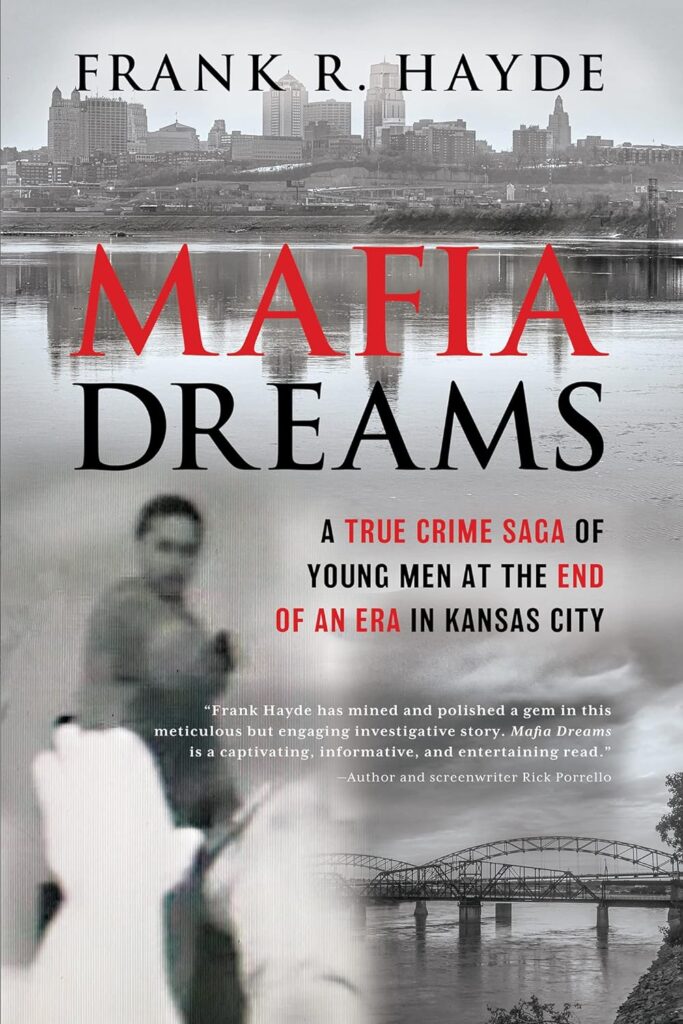
Michael Bushnell
Publisher
As an amateur Kansas City historian, pretty much any book that offers a glimpse into the city’s past or its notorious gangster history is going to be on my bookshelf. Living in Kansas City’s Northeast neighborhood for over 30 years and knowing what houses go with what families makes Frank Hayde’s new book, “Mafia Dreams: A True Crime Saga of Young Men at the End of an Era in Kansas City” even that much better.
“Mafia Dreams” picks up roughly where Hayde’s last book, “The Mafia and the Machine,” leaves off in the late 1980’s, shortly after the takedown of the Kansas City outfit by the FBI for the Las Vegas hotel and casino skimming scandal.
Hayde doesn’t waste a lot of time setting the table with decorative and unnecessary fluff. Chapter 1, sentence 1, sets the stage you need to know about the three “knockarounds” that fill the next 195 pages of the book. Anyone who’s familiar with Northeast Kansas City history or “the outfit” should appreciate the fact that this book opens with three mafia wanna-be’s who are driving a Silver 1990’s Lincoln Town Car down Independence Avenue on January 30, 1997.
Chapter 1 is a flash-forward, but doesn’t spill the beans on the forthcoming details. Chapters 2 and 3 set the stage, describing the Riley family’s lavish criminal lifestyle, their many rackets, usually involving insurance scams in other states, and why that lifestyle was attractive to young Italians like Michael Albanese and Nick LanFranca.
From Chapter 4 on, the book is difficult to put down. Hayde, much as he did in “The Mafia and the Machine,” tells a compelling and riveting tale of the set up and the takedown that ended up making national news and challenging established case law in the process.
From a hyper-local standpoint relating to Kansas City’s Historic Northeast neighborhoods, a number of names and locations will stand out, including the Basta movement of the early 1990’s and some key names and addresses that figure into the story’s interwoven plot twists. Some of those folks were even advertisers in “The Northeast News” at one point in time. We’ll leave it up to the reader to sort out the details.
Most books of this nature aren’t long on cited source material, but “Mafia Dreams” has over 16 pages of source citations including hundreds of newspaper stories, congressional records, law enforcement case files from the Kansas City Police Department, the FBI, the Oklahoma Highway Patrol, as well as federal court cases. In short, this is an excellently researched piece of history that Hayde tells in an engaging and interesting manner.
Here’s the bottom line: when you pick this book up, make sure you’ve got enough time budgeted because this is a compelling work that gets into the meat of the matter on page one and doesn’t stop until the last prison door is slammed.


















